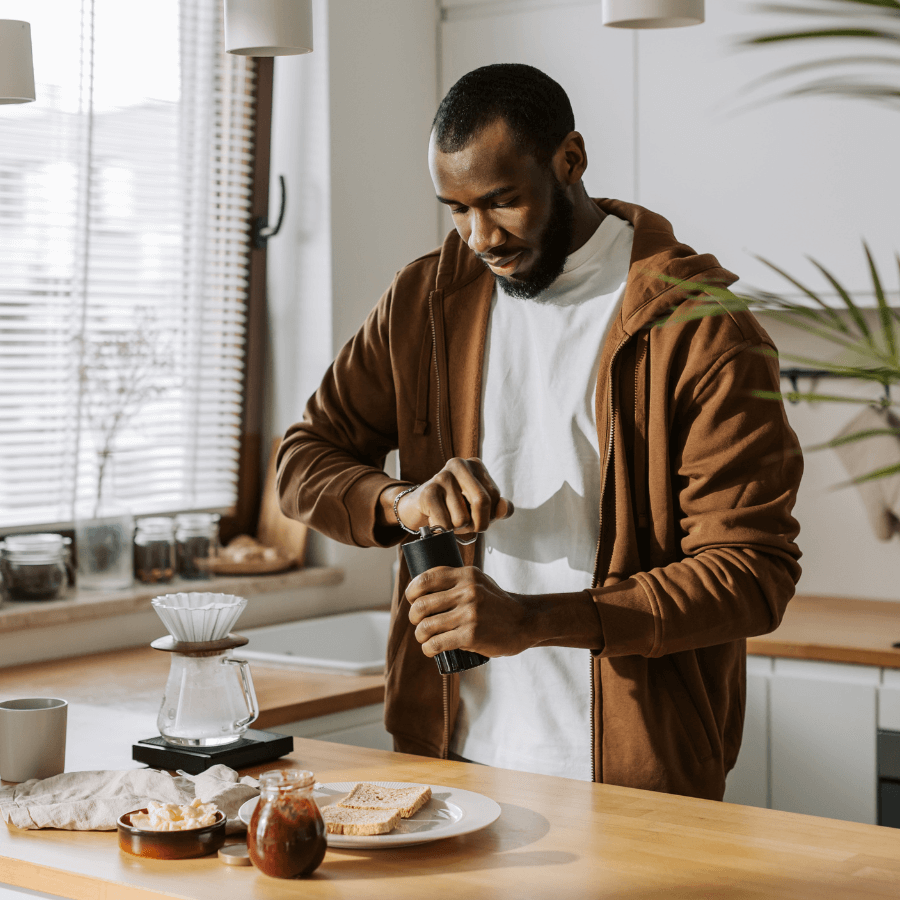coffee brewing guide
how to make great coffee at home
Brewing coffee at home doesn’t have to be complicated. Whether you’re using a drip coffee maker, French press, or pour-over, the key to a great cup comes down to freshness, water quality, grind size, and a method that suits your routine. This guide walks you through the essentials — from drink types and brew methods to grind and roast pairings — so you can enjoy better coffee, every morning.
popular drinks — and how to make them taste great at home
| Drink | Brew Method | Grind Size | Roast Level |
|---|---|---|---|
| Espresso | Espresso Machine | Fine | Medium or Dark |
| Americano | Espresso + Hot Water | Fine | Medium or Dark |
| Latte | Espresso + Steamed Milk | Fine | Medium or Dark |
| Cappuccino | Espresso + Foam | Fine | Medium or Dark |
| Cold Brew | Immersion (12–24 hrs) | Coarse | Medium or Dark |
| Iced Coffee | Drip or Pour-Over | Medium | Light or Medium |
👉 Popular Coffee Drinks and How to Brew Them
brew methods explained: pros, cons, and flavor profiles
Different brew methods bring out different qualities in your coffee. Some are bold and rich, others delicate and nuanced. Below is a quick comparison to help you choose the method that fits your taste, time, and tools.
| Brew Method | Grind Size | Roast Level |
|---|---|---|
| Drip Coffee Maker | Medium | Medium |
| French Press | Coarse | Medium or Dark |
| Pour-Over | Medium-Fine | Medium |
| Espresso Machine | Fine | Medium or Dark |
| AeroPress | Medium-Fine | Light or Medium |
| Cold Brew | Coarse | Medium or Dark |
| Moka Pot | Fine-Medium | Medium or Dark |
👉 Coffee Brewing Methods for Beginners
matching grind size and roast to your brew
The right grind size and roast level can make or break your brew. Too fine a grind in a French press? You’ll get sludge. Too coarse in an espresso machine? Weak and under-extracted. Here’s a chart to help you dial in your setup.
| Brew Method | Grind Size | Roast Level |
|---|---|---|
| Drip Coffee Maker | Medium | Medium |
| French Press | Coarse | Medium or Dark |
| Pour-Over | Medium-Fine | Medium |
| Espresso Machine | Fine | Medium or Dark |
| AeroPress | Medium-Fine | Light or Medium |
| Cold Brew | Coarse | Medium or Dark |
| Moka Pot | Fine-Medium | Medium or Dark |
👉 The Coffee Brewing Cheat Sheet
why freshness is still the most important brewing factor
Even with the perfect method and gear, stale beans will ruin your cup. Fresh-roasted coffee holds onto volatile aroma compounds that fade quickly after roasting. Grind just before you brew, store your beans in an airtight container, and use them within 2–4 weeks of the roast date for the best results.

related reads
-
Coffee Brewing Methods: A Beginner’s Guide
-
The Coffee Brewing Cheat Sheet
-
How to Store Your Coffee for Maximum Freshness
-
-
-
